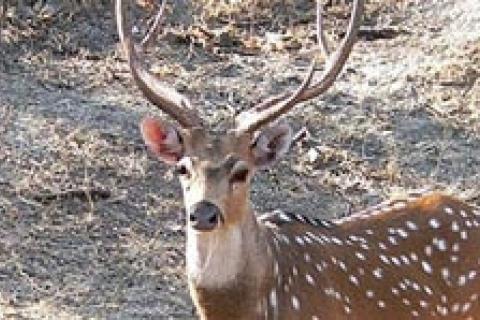
 As deer seasons wind to a close, many people shift their activities indoors and begin repairing gear, applying for licenses and planning their strategies for next fall's hunting. But you don't have to stop big game hunting just because whitetail and mule deer seasons have closed.
As deer seasons wind to a close, many people shift their activities indoors and begin repairing gear, applying for licenses and planning their strategies for next fall's hunting. But you don't have to stop big game hunting just because whitetail and mule deer seasons have closed.
One of the best ways to fill in the gap between the end of those seasons and the start of next year's is by hunting exotics. And the best place to do that is in Texas.
There species, such as blackbuck antelope, aoudad, axis and sika deer can be hunted on vast free-range settings or on high-fenced ranches that are so big, at thousands of acres, that you don't even notice there's a fence. (It's there mainly to keep poachers out and allow management practices to succeed.)
The most important thing to confirm before hunting exotics on these Texas ranches is that the animals have been living there for many generations and are the result of natural reproduction in the wild-not ones that were bred in a pen and stocked before a hunt.
I've hunted exotics many times for a variety of species in Texas, but my favorite of all is the axis deer, a native of India and Ceylon. This species was introduced to Texas nearly a century ago and thrives on the mostly arid ranches found there. Axis deer reproduce naturally here and have adapted so well to their new environment that they have to be harvested regularly to avoid overpopulating the habitat or competing with native whitetails.
They can be very challenging to hunt, particularly if you seek out an old, wary animal that has lived a long life and is ready to decline physically. Axis are gorgeous animals with elk-like racks and white spots on young and old alike, something like a new-born whitetail fawn's colorings. They weigh about 150-200 pounds.
Gene Fuchs, a well-known Texas wildlife biologist and hunting guide, put me onto my first ever axis deer on the South Fork Ranch, near Kerrville, many years ago. After glassing lots of animals and unsuccessfully trying to stalk several, Gene's son, Steve, who was accompanying us, spotted another axis, virtually hidden under a live oak tree. After a careful, cautious stalk, my 150 grain boattail bullet found its mark and a beautiful axis with 32-inch main beams was down.
As we admired the trophy, Fuchs explained that "some axis will be in hard antlers at any given time during the year, and all axis bucks can breed any day of the year, regardless of whether they have antlers or not." That makes late winter, spring and even summer a great time to hunt them.
"Axis does cycle every 28 to 32 days if they're not carrying a fawn," Fuchs added. "Once they drop a fawn, they can breed again within two months."
Because of this great reproductive capability, axis deer need to be cropped regularly on Texas ranches so they don't overpopulate the habitat and deplete the food supply.
That's a task many of us hunters will be glad to tackle.
Contact the chambers of commerce in central and western Texas for details on ranches that offer exotics hunting for naturally-reproducing, wild animals.
*One final thought: If you cringe at the word "exotic", meaning species brought in from other countries to ours, think brown trout. Think ringneck pheasant.
- 5331 views

